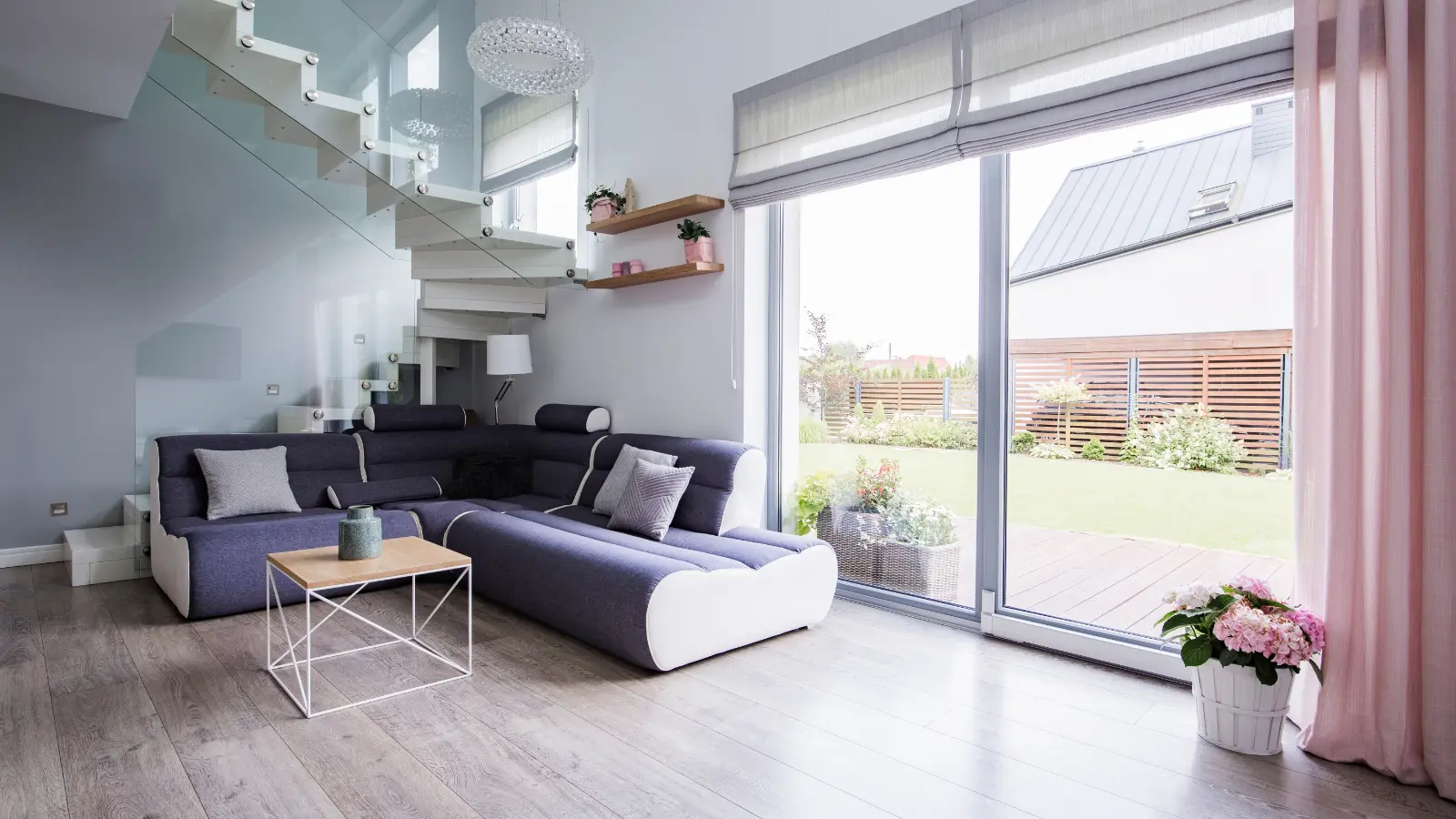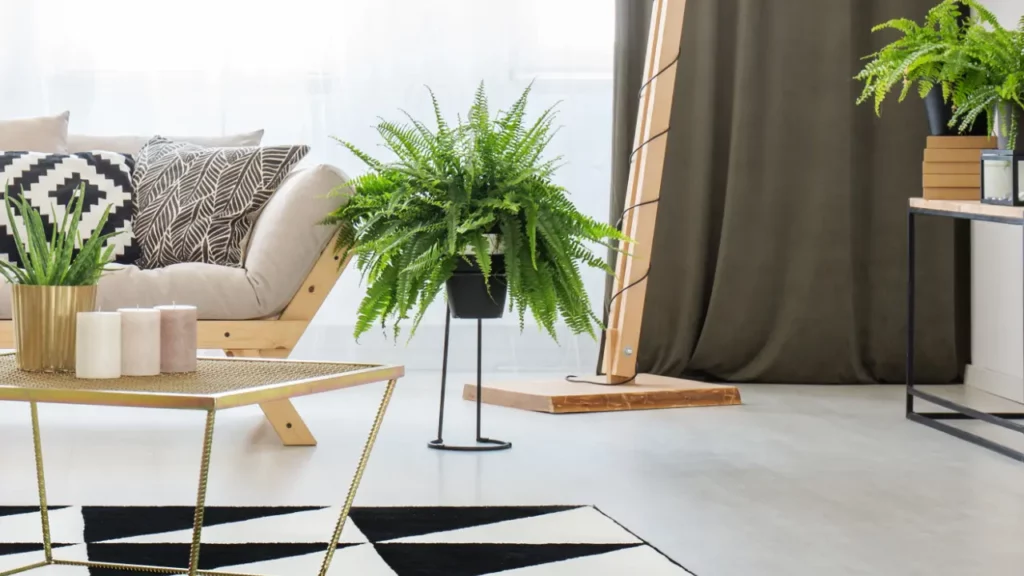Window Chic: Coordinating Window Treatments & Room Aesthetics

An often overlooked aspect of DIY interior design is coordinating window treatments with decor.
Whether it’s the charming appeal of curtains or the sleekness of shades, window coverings can elevate a room’s aesthetics — or wreck them if chosen carelessly.
But how do you achieve that flawless design symbiosis? This guide will introduce you to the art of matching window treatments with interior decor, making your space truly shine!
Understanding Your Room’s Personality
Every room tells a unique story, reflecting your taste and personality. Take a moment to jot down the mood you hope to achieve. Do you lean towards a cozy, rustic feel or modern minimalism?
Each design scheme should have a goal. Understanding this goal sets the stage for the window treatments you’ll consider.
1. Identify Design Themes
- Rustic Charm: Think earthy tones, textured fabrics, and perhaps wooden blinds or flowing drapes in muted colors.
- Contemporary Chic: Opt for clean lines, neutral hues, and roller shades or sheer curtains for a light, airy feel.
- Bohemian Rhapsody: Embrace bold patterns, vibrant colors, and various textures. Welcome unconventional materials to frame your windows.
- Minimalist Haven: Emphasize simplicity, functionality, and understated elegance. Choose monochromatic or neutral color palettes and streamlined blinds or roller shades that blend into the room’s color scheme.
- Nautical Retreat: To capture the serene ambiance of the seaside, go for light, airy fabrics in blues or whites for curtains, or consider wood or faux wood blinds reminiscent of driftwood.
- Industrial Edge: Metal blinds or heavy, dark-colored curtains can channel the raw, unfinished aesthetic of a loft or warehouse.
- Vintage Glamour: Luxurious velvet and silk fabrics reflect the opulence of a bygone era, as do ornate wooden blinds or shutters.
- Eclectic Fusion: Mix and match elements from various styles to create a unique, personal aesthetic. Be daring with your window treatments — combine patterns, materials, and colors to make a statement.
2. Assess the Room’s Functionality
- Living Areas: Consider light-filtering options to maintain an inviting ambiance while balancing privacy.
- Bedrooms: Prioritize blackout curtains or blinds to ensure a serene sleep environment.
- Kitchen: Opt for easy-to-clean materials like faux wood or metal blinds that can withstand splashes and spills. Or consider sheer curtains to let in natural light while maintaining privacy.
- Bathroom: As with kitchens, easy-to-clean window coverings are crucial in a humid bathroom environment. Look into water-resistant materials or consider a combination of blinds and curtains.
3. Take Precise Measurements
Before rushing off to the store or surfing online shops, note your window’s dimensions. Do you prefer a snug fit or need some leeway for adjustments?
- If you’re considering curtains, measure the width and length of your window and add a few inches for fullness.
- For blinds or shades, measure the inside or outside frame. Then, use these measurements to assess which size options will fit best.
- Don’t forget to measure the clearance above and beside your window for mounting hardware.
Finding the Perfect Match
You’ve established your room’s mood, evaluated its functionality, and recorded precise measurements. Now comes the fun part — browsing for window treatment designs!
1. Color Schemes
You have three options concerning color:
- Blend in: Your window coverings should match your walls or fit into the room’s color theme. For example, if you have a feature wall in bold hues, choose curtains or shades in complementary tones.
- Stand out: Make a statement by selecting window treatments contrasting the room’s color scheme. For instance, bright-colored curtains in a neutral setting can create an eye-catching focal point.
- Go neutral: Neutral colors like white, beige, or gray are timeless and versatile. Plus, they create a backdrop for other decor elements to shine.
2. Material Matters
Consider your room’s functionality.
- Is privacy a priority? Look for opaque fabrics like velvet or silk curtains or blinds with a room-darkening feature.
- Do you want to let in natural light while maintaining privacy? Consider sheer or semi-sheer curtains, blinds, or shades.
- Do you have children or pets? Choose durable materials like faux wood blinds that can withstand rough play and have easy-to-clean options.
3. Choose the Right Treatment Type
The right window dressing should fit your room’s needs and aesthetic.
- Curtains: Ideal for creating a soft, cozy feel and allowing diffused light into the room. They come in a smorgasbord of fabrics, designs, and lengths, making them adaptable to most spaces. They might not be the best option for high-moisture areas like kitchens and bathrooms.
- Blinds: These are excellent for controlling light and privacy. They’re available in materials like wood, faux wood, vinyl, and aluminum, each bringing a different aesthetic. However, they may not add warmth and texture like curtains or drapes.
- Shades: Whether roller, Roman, or cellular, shades offer a clean, streamlined look. They’re perfect for modern and minimalist interiors and are often made from light-filtering fabrics that balance natural light and privacy. The downside is that they require regular dusting.
- Shutters: These give your windows a classic, timeless look while offering excellent light control and privacy. However, they’re more expensive and demand a more complex installation process.
4. Get Creative
- Don’t limit yourself to traditional window treatments. Layering sheer curtains over blinds creates depth and adds texture to a room. Drapes and blinds also make for an exciting and functional combination.
- Experiment with different hanging styles. Curtains can be hung from rods, rings, or clips for a different aesthetic.
- Don’t be afraid to mix patterns, textures, and materials. Just remember to maintain overall consistency with color or style.
- Look beyond the premade options and consider custom-made treatments that fit your space perfectly.
Consulting an Expert
You already have access to expert advice if you’ve hired a designer to reimagine your home. If not, reach out to a professional for help — and we’re not talking about the guy with an apron at your local box store!
LA’s architects and designers turn to Aero Shade for superior window treatments. We’ve customized and manufactured window coverings for over half a century and have served some of the premier businesses and residences of metro Los Angeles.
Please visit our showroom to view and test working models of our products, or call us for a free, in-home, no-obligation estimate. 323.457.2835.
You’ll be pleased with the results.
FAQs: More about Window Treatments
Q: Can I mix different window treatments within a single room?
Mixing treatments can add visual interest. Just ensure they complement each other in color or style for a cohesive look.
Q: How do I choose the right size for window treatments?
Measure twice! Make accurate measurements to achieve a tailored fit. For curtains, opt for a width 1.5 to 3 times the window width for a full, elegant drape.
Q: What about window treatments for oddly shaped windows?
Consider tailor-made solutions, or explore adjustable options like cellular shades that fit a variety of window shapes.
Q: What colors tend to make rooms feel more spacious?
Lighter colors such as whites, beiges, and soft pastels can make a room feel more spacious. They reflect light and create an open, airy feel.
Q: Can I use different materials for window treatments in different rooms?
Absolutely! The material you choose should best fit the function and style of each room. For instance, water-resistant materials work well in bathrooms, while heavier fabrics might be better for bedrooms.
Q: Should my window treatments match my wall color?
Not necessarily. Window treatments that match your wall color can create a seamless, elegant look, but contrasting colors can lend visual interest and highlight your windows.
Q: Is it possible to have too many different types of window treatments in one home?
It’s all about balance. Too many different styles could make your home feel disjointed. Try to maintain a consistent design theme while adapting to each room’s specific needs.
Q: How often should I replace my window treatments?
The lifespan of window treatments can vary widely depending on the material and quality. However, a good rule of thumb is to consider replacing them every 7-10 years or when they show signs of wear.
Q: What’s the difference between blackout and room-darkening shades?
Blackout shades block nearly all incoming light, making them ideal for bedrooms or media rooms. On the other hand, room-darkening shades block a substantial amount of light, but not all, making them suitable for living rooms or dining rooms.
Q: Can window treatments help with energy efficiency?
Yes! Certain window treatments, such as cellular shades or thermal curtains, can improve your home’s energy efficiency by reducing heat loss in the winter and heat gain in the summer.
Q: What are the benefits of custom window treatments?
Custom window treatments are made to fit your windows perfectly, offering superior light control and privacy. They also allow for greater material, color, and style personalization.


